Posts from films
Edinburgh Fringe
When things are quiet here it’s usually a sign that I’m busy. Or possibly uninspired. This is definitely the former.
Timandra Harkness has a new Wellcome-backed show coming to the Edinburgh Fringe this year, BrainSex. We’ve been making a bunch of insert films for it, including this Kubrik homage in St. Andrews:
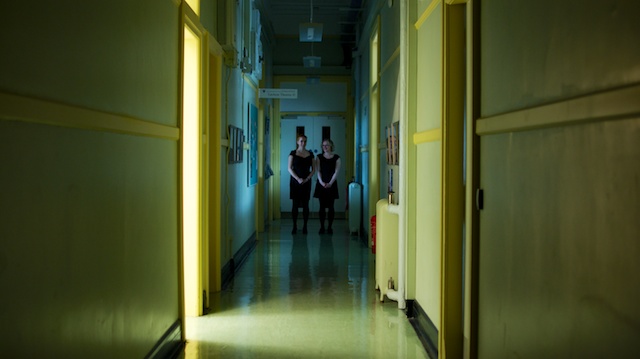
…which leads to an oddly stand-offish deep two sequence of which I’m unreasonably proud. Partly because I only had two lamps and a miniature LED panel to light it with.
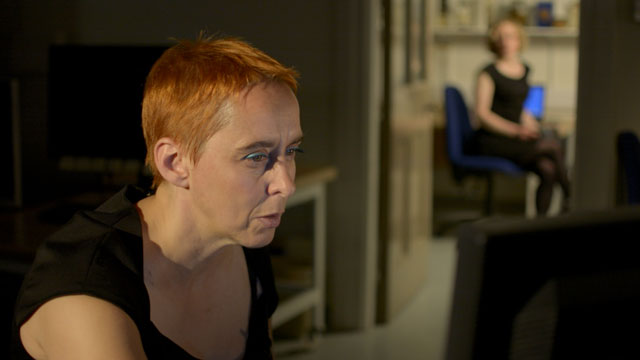
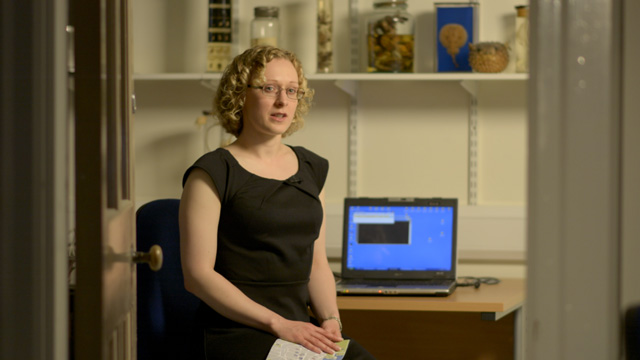
In a second St. Andrews film this leads to a Prisoner pastiche:
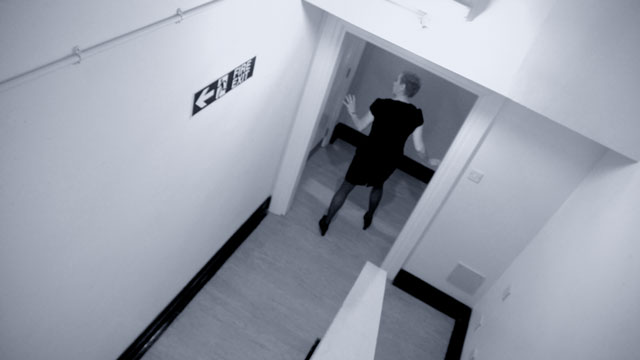
It was a roller coaster shoot. We wrote and shot the two St. Andrews film in a day, wrapping at 22:30 then driving to Newcastle. The following day we did the rest of the A1, and found ourselves desperately tweeting to see if anyone we knew had a Spitfire we could film with, like, tomorrow. That actually worked, more-or-less:
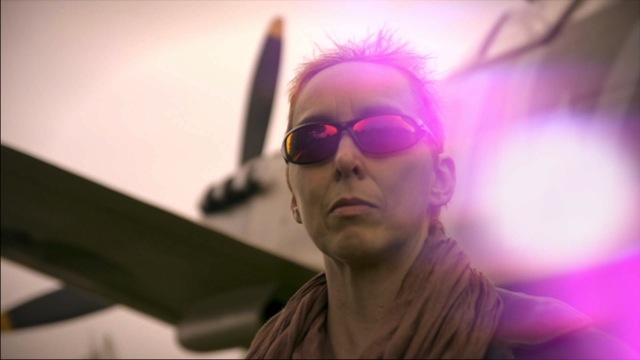
…and at the same location we shot this:
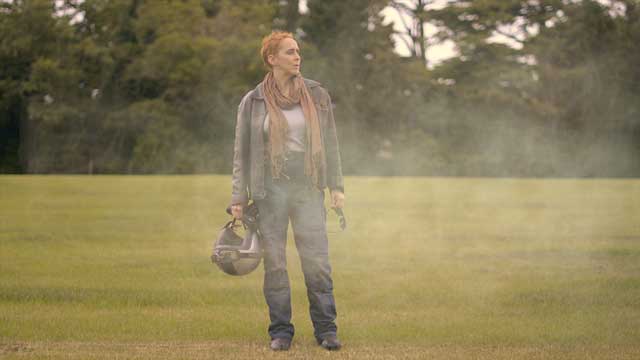
…and this:
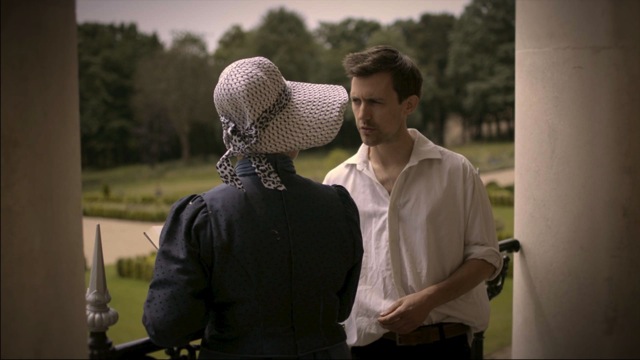
John Stuart Mill quotes make for lousy Powerpoint slides but rather entertaining costume melodrama, Timandra reckons.
This was the first shoot on which I’ve used the Nikon D7100. For the most part I’m happy. Nikon’s software continues to be thoroughly braindead when it comes to video, but the pictures are mostly quite lovely. In low-key situations it needs help from NeatVideo to remove fixed-pattern noise, but the results look clean and it’s certainly sharper than early video DSLRs. Dynamic range is impressive, I had no overheating problems despite filming in a blisteringly hot studio for a day, high-ISO performance is good, and not having to worry about moiré is a blessed relief.
I’m mostly working with the D7100 on a minimal Zacuto rig, with a SmallHD DP4 EVF and a JuicedLink preamp. The resulting package looks like an explosion in a cable factory and is starting to get heavy, but at least it functions a bit more like a proper video camera. I wish the DP4 had zebras.
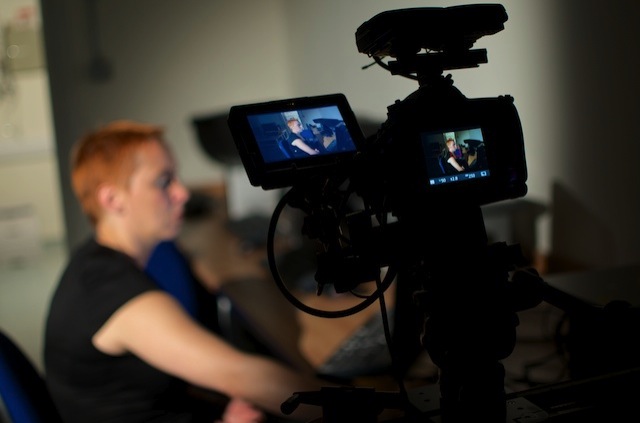
Lenses span the full set: Nikkor 35/1.8G, 50/1.4G, 85/1.8G, 105/2.8 Macro; vintage Nikkor 50/1.4 and 80-200/4. My default lens for handheld work is still a Sigma 17-50/2.8, which suffers all manner of quirks but for the most part I rather like them. I even used the Sigma 10-20/4-5.6 for a couple of shots.
Grading mostly in Final Cut Pro X, though my plugin collection continues to grow and there are often layers of stuff going on with these shots. The D7100 benefits from a smidge of sharpening in post, interestingly.
You can catch BrainSex at the George Square Box 1st—26th August. Tickets.
Showreel
We’ve (finally) cut a showreel. It features Richard Dawkins, Dava Sobel, Steven Pinker, David Attenborough, Jem Stansfield, Bruce Hood, Alok Jha, Matt Parker, Jon Butterworth… and a lobster.
Showreels, it turns out, are hard. In our case, we’re aware that many potential clients come across our work via some of the more straightforward films we’ve made. It can be tricky to convince them that’s an aesthetic or narrative choice rather than an indicator of our range or inclination, so we wanted a showreel that demonstrated:
- The spread of people with whom we’ve worked.
- Our eye as photographers.
- We’re really good at detailed, close-up, practical science.
- Punchy editing.
- Some serious content.
- …and a sense of whimsy and wit.
Success?
Why filming is slow
Learning to light continues to be one of the most fun parts of my work. This tutorial doesn’t do anything beyond basic three-point lighting for a three-camera interview, but it’s weirdly compelling:
I like it partly because it illustrates why making films can be slow. That’s a lot of work, people and gear to make an interviewee and their interviewer look good.
If you’re looking at films you’ve made or commissioned and thinking “we used great cameras, why does it still look rubbish compared to broadcast?” — this is why. Prep, gear and crew all cost money: sometimes they’re worth it.
Hard and soft lights
This piece from Zacuto covers material that should be familiar to most film-makers:
Film Lighting Tutorial: Qualities of Light from Zacuto on Vimeo.
…but the sequence which goes hard light → hard shadow on scrim/Hitchcock gag → using that scrim to turn the same hard light into a soft source is very nicely thought-out. Sometimes demonstrations are about finding the minimal sequence of operations which makes your point.
5 Tips for Writing Effective Scripts For Clients
5 Tips for Writing Effective Scripts For Clients:
The narration is the voice of your client. The personality in that voice is the key to how well it resonates with a specific audience. Unless you’re video is to be played at a conference of English teachers, perfect grammar is not always required.
— via Masters of Motion, which I think used to be Canon Filmmakers.
Solid, practical advice. If you don’t find scriptwriting challenging you’re doing it wrong.
The trouble with notes
This is why film-makers always cringe when anyone with the word ‘executive’ in their title gets to see a rough-cut:
@lafamiliafilm Hilarious negative executives notes to Ridley Scott after seeing Blade Runner for the 1st time.. twitter.com/MattBloomFilms…
— Matt Bloom (@MattBloomFilms) March 14, 2013
I once worked on a series which had more BBC executives attached than we had production team making the show. We also had a four-day turn-around from shoot to delivery of edit (and another three days to transmission), every week for six weeks. That was fun.
How long should a film be?
This came up on a science films mailing list the other day — how long should a web video be, and what evidence do we have? My response: sheesh. You’re joking, right?
It’s not about how long films should be, it’s about how long this film should be. It’ll vary for every film, and every format. One of the big advantages of the web over broadcast is not being stuck with fixed durations.
Evidence? You want evidence? That’s ridiculous. Or at least, it’s a research project, because the question boils down to: does video work as a communication tool? To which we know by inspection that that answer is: “yes, except when it’s no.” If you want solid evidence for how effectiveness correlates with duration, you’re going to be waiting for a long time. And you’d still only be looking at correlation.
How long for whom? Different audiences and different audience contexts have different needs. For whom are you making the film, and how and when do you expect them to watch it?
What are the trade-offs? A subject for another post, another time, but: it often takes more effort and skill to make a good three-minute film than it does to make a six-minute film on the same subject. If 100,000 people watch, that’s two-thirds of a person-year you’ve avoided wasting. But it might cost you twice as much to make. Where’s the balance for you and your audience?
What’s the purpose of the film? this comes back to audience context, but: is the film intended to provide a talking point you hope people might discuss at the office water-cooler or down the pub? Is it detailing a specific idea or technique of particular interest to the viewer? Is it to be watched in a professional context, providing a briefing on a specialist subject? For each of these situations, your audience makes different judgements about their acceptable level of investment.
If you do find some data about retention rates versus film duration, how does that control for some films being plain less good than others? When was the data captured — viewing habits are changing so quickly, it had better be more recently than, say, 18 months ago, or it’s irrelevant.
What’s your success metric? Audience reach? Recall?
Asking how long a film should be is exactly equivalent to asking how long a piece of writing should be. Sane answers come down to things like:
A film should be as long as it needs to be, and no longer.
and:
Good films can sustain for longer than bad films.
…both of which are based on aesthetic judgements, not empirical evidence. And there’s the problem: if you try to reduce communication to hard numbers, you’re rather missing the point.
Obligatory marketing message: one of the things StoryCog does is work through this sort of issue with clients. We make films, and we do that consulting thing too.
Structure
A client of mine sent a rough-cut through for comment last night. It’s great, so while I sent copious notes in timecode detail, that’s all fiddling around the margins. They’ve got the hard bits right already.
More useful, then, is lessons to draw from this film to guide the next one. What I wrote applies rather generally:
How does it open? Start on action, clear statement of intent, etc. Usually, the first page of a script can be thrown away — come to the action late, and all that.
Where’s the story? Not just what is it, but when is it? Knowing where the bulk of it comes allows you to introduce terminology and context early, which smooths the whole film.
Know how you finish. This applies for each shot as well as for the film overall. What’s the end-point?
As ever: grab attention, sustain it, reward it, and close gracefully.
For short factual films, just about everything else flows from that arc.
Storytelling through Composition
Shane Hurlbut (whose surname is, I believe, ‘ASC’) has a nice post about Storytelling through Composition:
I wanted my framing to be like a teenager: off, unpredictable, not perfect, still finding themselves. It was fun to be unconventional with our coverage.
(Via Hurlbut Visuals)
I’m a big fan of the offbeat framings he shows from Crazy/Beautiful. Desperately hard to pull off, there must have been many leaps of faith taken on set.
FCPX audio workflow
Now you’re all set to start cutting with the confidence that your clips will sound great from the moment they land in your timeline.
Film-maker Dan McComb has been writing some excellent FCPX tutorials of late, and I particularly liked this piece on audio processing and synchronization for interviews. I don’t go to quite these sorts of lengths myself — in part because I tend not to shoot interviews — but it’s reassuring to know that my overall workflow and tool use is similar. Two notes in particular:
Firstly, Dan advocates cleaning up audio during ingest and edit prep, rather than going back later. I’d absolutely endorse that sort of thinking when working with FCPX. With previous NLEs I’d lock picture and then go through a grade and dub process, but with FCPX I’ll usually do basic corrections prior to cutting and let them ripple down through the edit process.
The result is a much more watchable edit at all stages, and that often leads to smoother client viewings when one’s working with inexperienced clients. One of the reasons I like FCPX is that it imposes essentially no penalty for working this way.
Secondly, I’d only vaguely heard of isotope RX, and wasn’t aware that it worked within FCPX. Useful.
Production models
One of the things we’re doing with the Ri project is setting up production processes from scratch. The whole shebang, from crewing through post-production and delivery, for an in-house production unit and using external freelancers. The key question when doing this is: how much baggage does one carry across from previous production models?
Part of the answer to that rests in another question: how far can you push production values with tiny crews?

Twenty years ago, nobody was expected to be a camera operator, sound recordist, director, researcher and editor, all at once, from the moment they joined the industry. Today, we absolutely expect production staff to be wielding cameras (thank you Sony for the PD150’s legacy) and cutting their own rushes (hat-tip to Apple for Final Cut Pro). But these are (or were) specialist skills, and training and support needs are big variables when you’re setting up a new web channel.
I’ll be blogging here about the process as we learn how to do this, but one thing is already clear: I can’t begin to say how valuable my broadcast experience was. I learned a huge amount from working on big studio shoots, where a 50-strong crew worked seamlessly. Without that background, we couldn’t have done DemoJam, where we threw most — but not quite all — of the studio process away and got away with something much more sustainable. By the skin of our teeth, granted.
But I’m also profoundly grateful that my first real broadcast gig was with a then-tiny team, making Local Heroes for BBC2. The production company, Screenhouse, consisted in those days of myself and the producer/director working from his attic, Adam the presenter in Bristol, a production manager in Harrogate, and another researcher in London, all working from spare rooms, bedrooms, the kitchen table, the sofa, or the local coffee shop. Our fax machines ran hot and our phone bills were huge, but we made transmission.
Nobody told me how ridiculous that setup was; nobody let slip that I was being asked to do impossible things. So I got on and did them.
That, I think, is often the key. Don’t let people know that what they’re doing is impossible. Hire smart people who can learn fast; let them make mistakes; be there to catch them; turn over enough work that you can afford to carry the learning curve.
Bumpy ride? Absolutely. It’s going to be an exciting year.
Things I’d like to see in Final Cut Pro X 10.1
Final Cut Pro X is out, and there’s much wailing and gnashing. Walter Murch may have walked back to Avid, there’s nary a hint of Bruce the Wonder Yak. Vocal critics decry the lack of export formats and monitoring support. “This is not,” they say, “A professional tool.”
What’s changed, I think, is what ‘professional’ means. In a post-tape, post-broadcast world FCP X looks elegantly minimalist. Those are the circles in which I now move. If my former broadcast colleagues don’t think this is a ‘professional’ environment, well, I can sympathise. But the world is moving on.
There’s lots of focus on what’s missing from previous Final Cut versions. More interesting, I think, is what should be added to X. Which isn’t quite the same thing. My current wish-list is a mix of things that, on reflection, I think should return — and whole new approaches that would have made no sense previously.
More than one clip browser. We were used to having multiple bins open at once, and while the discipline of having just one browser is refreshing, it’s also limiting. Let me spawn more, please. I have a whole spare monitor waiting for them.
Tag-based filters and effects. Let me tag clips on the storyline, and then apply video and audio filters to those tags. For example, I’d tag dialogue as ‘voice1’ and ‘voice2’, and drag preferred EQs to those tags in the storyline index. Instant global EQ; tag groups become sub-mixes and I’ve regained most of what I miss from Soundtrack Pro. To the tag set “EXT, dayfornight” I apply a day-for-night grade. This would make me very happy.
Global filters. In Soundtrack Pro I habitually drop a soft limiter on the master mix; lots of people chuck a broadcast safe on their final video render. Give me a special tag ‘global’ and I can do those within the filter-on-tag interface.
Shared metadata. Lion brings Xsan into OS X for the first time; between that, low-bandwidth codec support, and Thunderbolt storage we have all the tools we need to make shared storage and editing a core feature. This has to be part of the plan, right? — but let’s have it sooner rather than later. Thanks.
Photoshop layers support. Bring that back, please. Make a PSD a compound clip of a 10-second freeze, let me step into it and enable/disable/extract individual layers. Thanks.
Timeline zoom and autoscroll. The storyline doesn’t autoscroll on playback? Tell me that’s a bug. Also: when I zoom in and out on the storyline, I expect the playhead to remain centred. We fought for that in FCP for years, and we were right.
FCP7 import. Tags for bins and we’re done, surely? Premiere Pro can do it, it’s kinda necessary.
Multiclip editing. It’s coming, right? Oh, but how are you going to show me a multitrack preview when there’s only one viewer window? Backed yourself into a corner there, huh?
Subtitle (closed caption) authoring. I’ve yet to find a genuinely pleasant workflow for producing subtitle tracks.
ProResLT. Project rendering options include vanilla, HQ, and 4444 flavours of ProRes, but not LT. Shame, it’s a great compromise.
Show me the clips I just synchronised. Minor detail: I’ve tagged clips with their take, which makes it easy to select all the material from that take and ‘Synchronise Clips.’ Trouble is, the synced clip ends up back in the Event, named for one of the video clips, and I have a devil of a job finding the damned thing. Since tagging it with the take is likely the next thing I’ll want to do… take me back to the Event and highlight the synced clip, please? Or tag it so it appears in the current collection, maybe?
Note that I’ve not talked about external monitoring, OMF export, YUV grading and all the other ‘professional’ stuff. Just the bits I’d actually use. The more I think about it, the more I think applying filters to tags is the killer here. And that’s interesting because such an approach would have made no sense at all in earlier editing packages. If it looks like progress and smells like progress…
For me, right now, Final Cut Pro X is probably closer to being the editing tool I need than Final Cut Studio 3 was. That’s impressive. But I want it to be clearly better. It’s not. Yet.
[Update 25/6: added Subtitle (closed captioning) to wishlist. I’ll keep updating as explore more; also added ProResLT.]
[Update 26/6: added ‘show me the clips I just synchronised’]
Make: wave machine
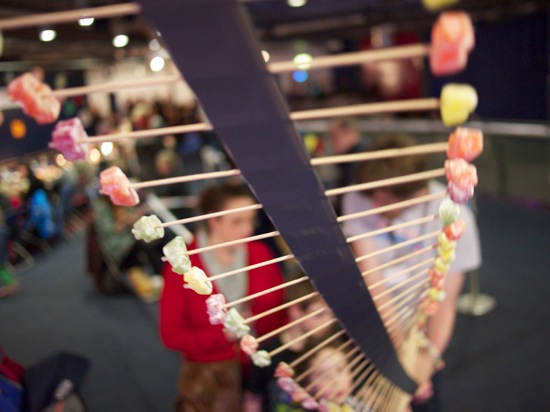
The jelly-baby wave machine film we made last year for the National STEM Centre and the Institute of Physics was featured on the Make: blog a couple of days ago. Yay!
Even before this the film was the most-viewed resource in the National STEM Centre’s eLibrary.
EM Induction
I mentioned this film in the previous post — we made it for the Dream Teachers competition. Also to test some camera and audio equipment and to remind ourselves how we work together before we shoot a bunch more of the physics demonstration films.
It’s a long way from perfect, but we’re happy enough to put our name to it. Alom has some notes over at the YouTube page about why he introduces the topic with this demo rather than the more traditional magnet-and-wire-with-ammeter approach.
Colophon for the video nuts: shot on a Nikon D7000 with Sigma 17-50 ƒ/2.8 OS, Nikkor 50mm ƒ/1.4 & 105mm ƒ/2.8 lenses. Audio from Sennheiser wireless lav dropped into an awful MicrotrackII recorder. I had my lighting kit with me, so thought I might as well use it.
[update: The film was picked up by one of the science bloggers at the Guardian.]